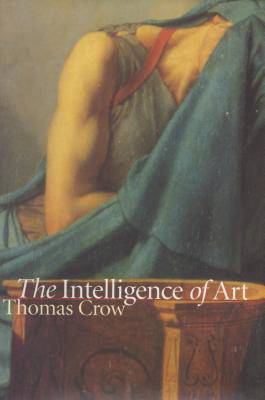
- Afhalen na 1 uur in een winkel met voorraad
- Gratis thuislevering in België vanaf € 30
- Ruim aanbod met 7 miljoen producten
- Afhalen na 1 uur in een winkel met voorraad
- Gratis thuislevering in België vanaf € 30
- Ruim aanbod met 7 miljoen producten
Zoeken
€ 46,45
+ 92 punten
Omschrijving
With this book, Thomas Crow contributes a refreshing analysis of the present state of art history, the practice of interpreting art and making it "intelligible." He aims to relocate the discussion of theory and method in art history away from models borrowed from other disciplines by presenting what he considers three of the most successful and challenging works in the literature of art history: Meyer Schapiro on the Romanesque portal sculpture of the abbey church of Sainte Marie in the French town of Souillac, Claude Levi-Strauss on the Native American masks of the Northwest Coast, and Michael Baxandall on the limewood sculptors of Renaissance Germany.
Sketching the history of trends in art history--from description and biography, to more recent social-historical methods, to the latest wave of postmodernist approaches--Crow sets out a course that affirms the rich and valuable tools of language and methodology developed by generations of art historians while recognizing the important contribution of recent theory in raising the interpretive stakes. The Intelligence of Art offers nothing less than a concrete new way to grasp the infinitely complex operations of human intelligence in artistic form.
Sketching the history of trends in art history--from description and biography, to more recent social-historical methods, to the latest wave of postmodernist approaches--Crow sets out a course that affirms the rich and valuable tools of language and methodology developed by generations of art historians while recognizing the important contribution of recent theory in raising the interpretive stakes. The Intelligence of Art offers nothing less than a concrete new way to grasp the infinitely complex operations of human intelligence in artistic form.
Specificaties
Betrokkenen
- Auteur(s):
- Uitgeverij:
Inhoud
- Aantal bladzijden:
- 148
- Taal:
- Engels
- Reeks:
Eigenschappen
- Productcode (EAN):
- 9780807849002
- Verschijningsdatum:
- 28/08/2000
- Uitvoering:
- Paperback
- Formaat:
- Trade paperback (VS)
- Afmetingen:
- 157 mm x 236 mm
- Gewicht:
- 249 g

Alleen bij Standaard Boekhandel
+ 92 punten op je klantenkaart van Standaard Boekhandel
Beoordelingen
We publiceren alleen reviews die voldoen aan de voorwaarden voor reviews. Bekijk onze voorwaarden voor reviews.











